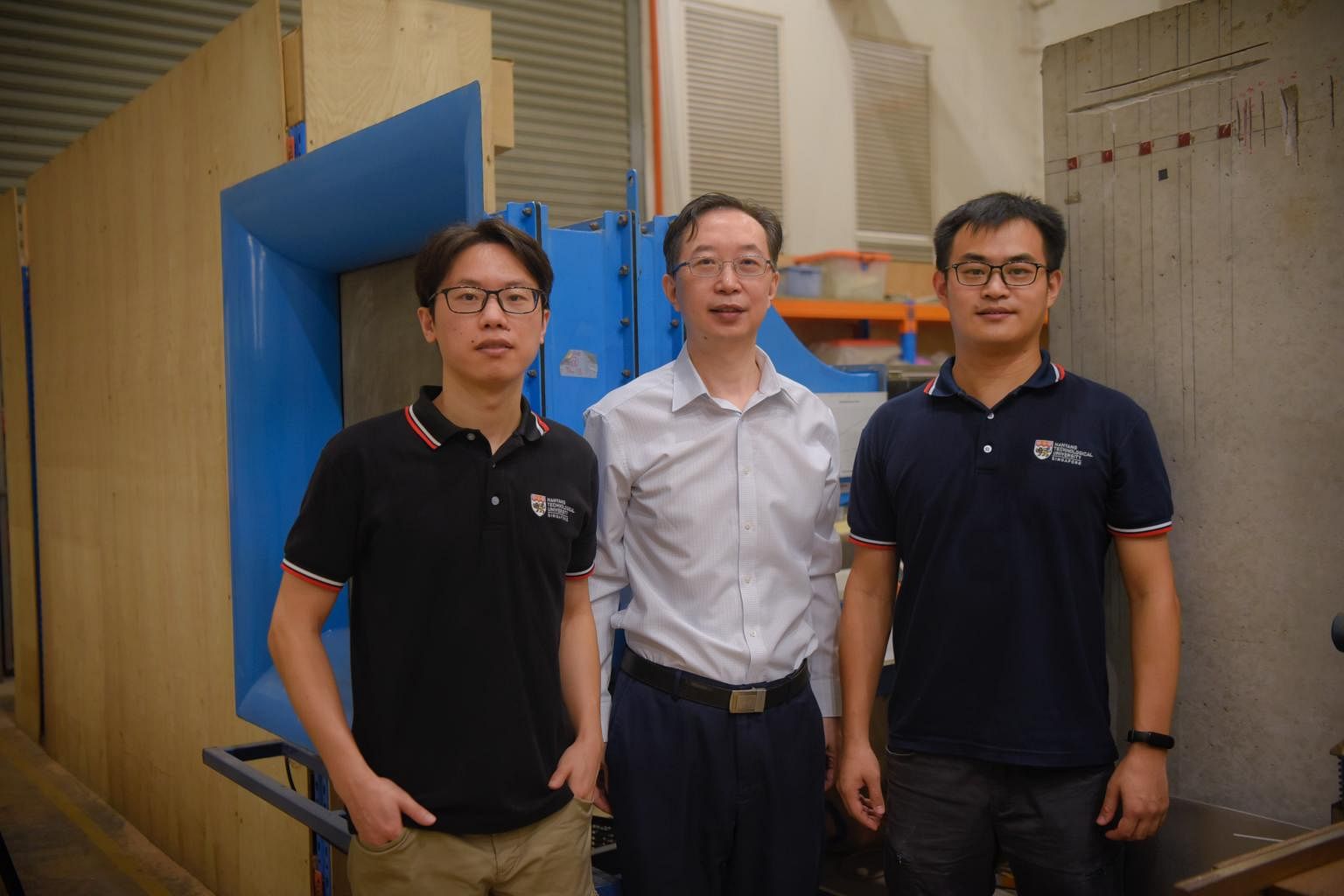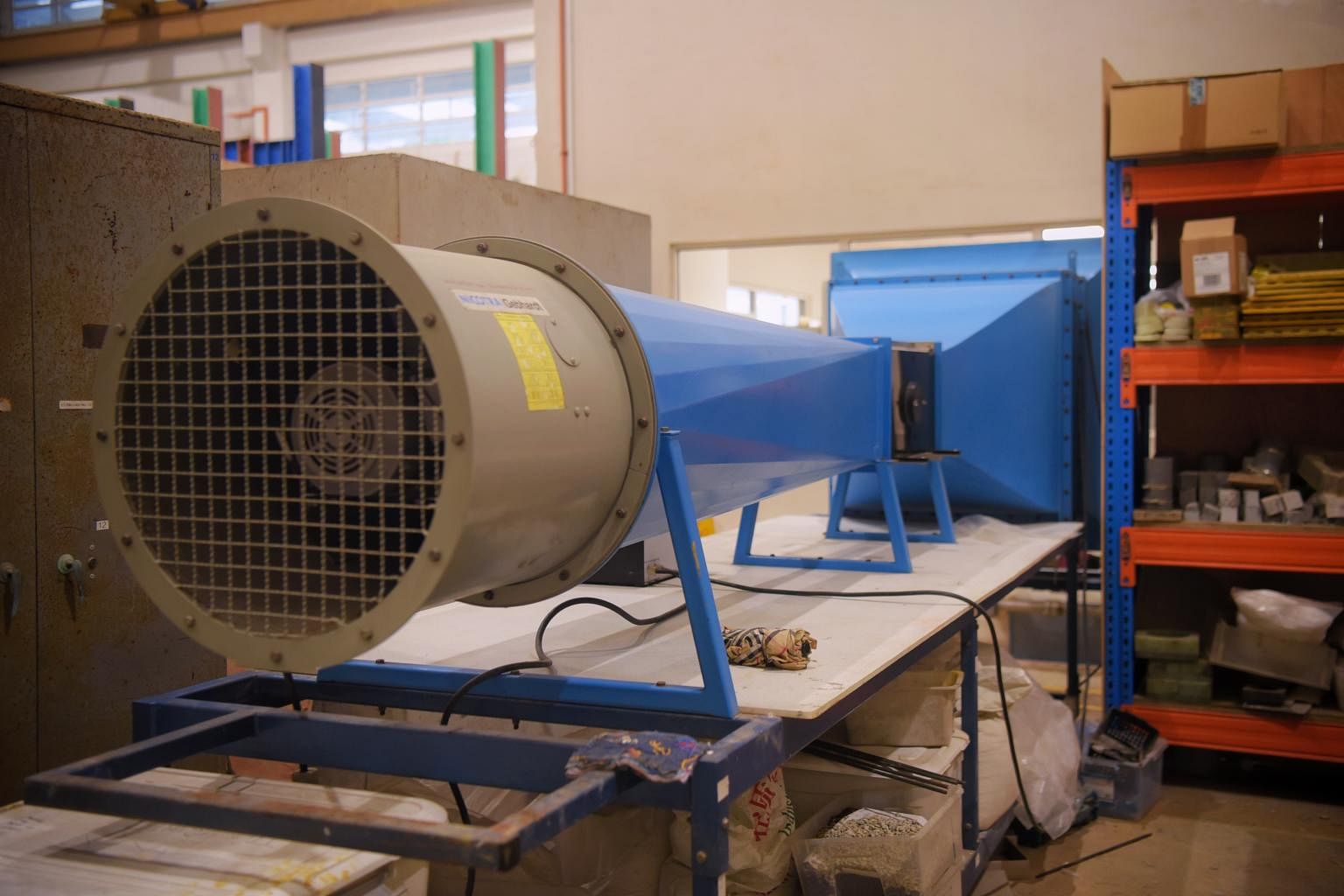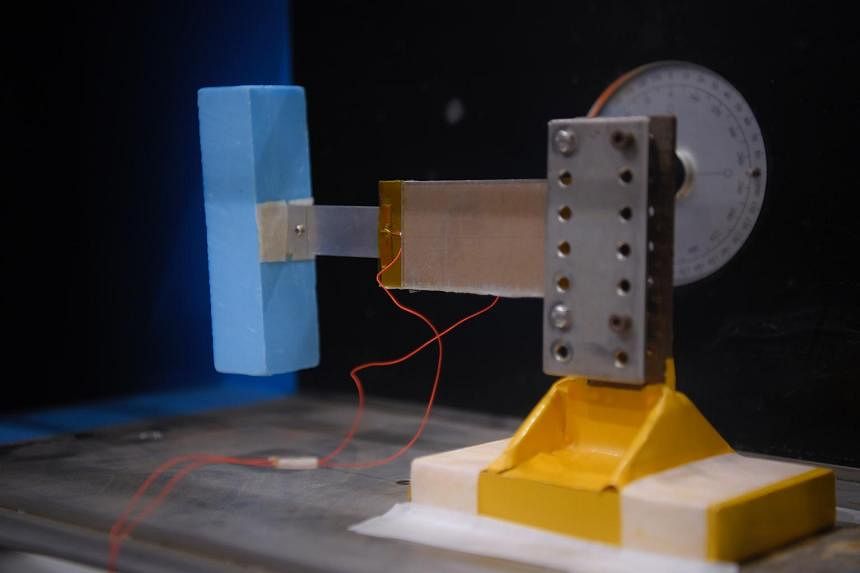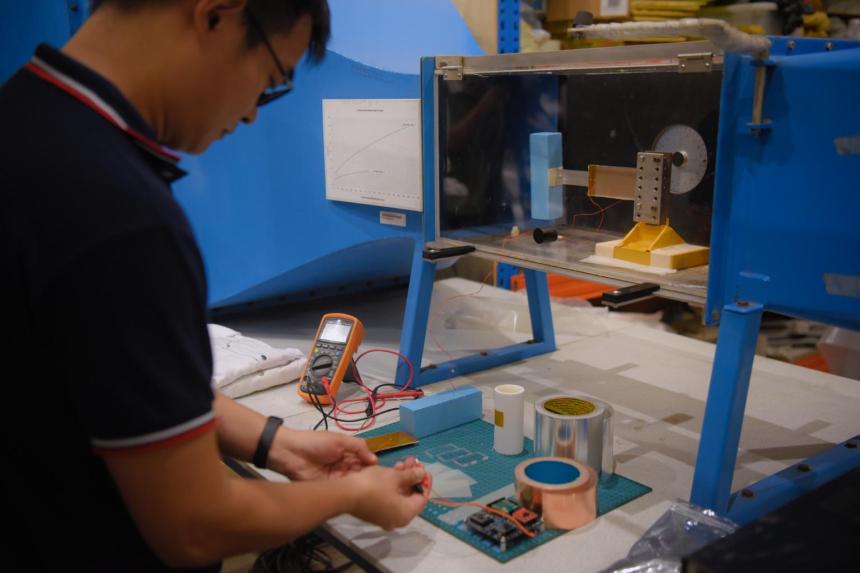SINGAPORE - Forget giant wind turbines, or the need for gusty winds. Researchers at Nanyang Technological University (NTU) have found a way to harness power from a gentle breeze, allowing built-up urban areas where wind speeds are lower to tap this form of clean and sustainable energy.
The small-scale wind harvester can be used to power low-energy electronics, such as lights or commercial sensors, by picking up vibrations from the wind or on the surface of buildings.
Unlike a giant wind turbine, the device is the size of a water bottle and made of copper, aluminium and other parts worth around $10.
It can serve as a cheap and environmentally friendly power source for sensors that are increasingly common in the expanding Internet of Things sector, said the scientists in a presentation to the media on Oct 6.
Like a wind turbine, the harvester converts kinetic energy from the wind into electricity, and it can be easily attached to, say, a building or a bridge.
Gentle vibrations are picked up by the harvester, which produces electrical charges on sheets housed within.
Early prototypes are able to produce 3 volts and generate 290 microwatts of electricity from wind speeds as low as 2m per second - the average wind condition in Singapore.
Based on the early tests, this amount of power enables a temperature sensor to send data readings to a computer.
Professor Yang Yaowen from NTU's School of Civil and Environmental Engineering, who led the project, said: "Our research aims to tackle the lack of a small-scale energy harvester for more targeted functions, such as to power smaller sensors and electronic devices."
With a typical day's worth of wind, the device can theoretically generate enough energy to power such sensors on intermittent mode for more than a week, or an LED array for 24 hours, said Dr Hu Guobiao, one of the researchers.
He added that the technology can help technicians who often face the tedious task of replacing the batteries in hundreds of sensors along train or sewage tunnels that check for structural flaws.
"Sometimes these sensors are embedded in concrete or on high-rise buildings, so they are difficult to access," he said.


The researchers are exploring ways to deploy the wind harvesters to power multiple sensors in such areas, said Dr Hu, adding that industry players have expressed interest to use the technology.
With the rise of digital devices that require sensors, the scientists envisioned the harvester as a sustainable alternative power source, reducing pollution caused by disposed batteries.
The team, which has worked on the project for around 10 years, intends to improve the device to produce more power and soon store energy in rechargeable batteries.
The harvester is expected to be supplied to commercial buyers by 2025 but there are no plans for consumer sales for now, the team said.




